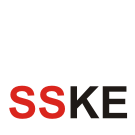From SSKE
Different terms such as access, utilization, availability and coverage are often used interchangeably to reflect on whether people are receiving the services they need2. Access is a broad term with different dimensions. Comprehensive measurement of access requires a systematic assessment of physical,
financial and socio-psychological access to services.
• Availability refers to the physical access or reachability of services that meet a minimum standard. The latter often requires specification in terms of the elements of service delivery such as basic equipment, drugs and commodities, health workforce (presence and training), and guidelines for treatment. This can only be obtained by facility visits, using standardized data collection instruments. Data on the population distribution are required to estimate physical access. More precise estimates of physical access use travel time (and costs) rather than distance, but are difficult to measure.
• Affordability refers to the ability of the client to pay for the services. Data can be collected by facility visits or by household interviews. The latter is likely to be a more accurate reflection of what the consumer paid. The extent to which the service is affordable depends on the clients' ability to pay which complicates measurement.
• Acceptability of the service predominantly has a socio-psychological dimension which can best be measured through household surveys. Client exit interviews are a biased sample as those who stay away from the facility because of socio-cultural barriers will be missed. These dimensions of access are a pre-condition for quality.



